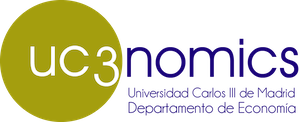Should public authorities regulate firms’ entry into markets or should this be left to the élan of private agents?
By Luis Corchón
Based on research by Luis Corchón and Ramón Torregrosa
Shall entry into markets or social activities be controlled by public authorities? Or shall this issue be left to the élan of private agents? The answer to this question will not arise a unanimous answer in our profession. This is partially due to ideological factors. But it is also due to our lack of understanding of this matter, both theoretically and empirically. Let us start by discussing the role of theory in economic research.
Economic theory attempts to distil the key elements of an economic problem, keeping important items only. Once these items have been isolated, they are put through the harsh filter of mathematics. Economic theory produces models, simplified representations of reality that enable us to understand it. Thus, when studying a market, we abstract from noises, colours, the language in which consumers and sellers communicate, whether it is raining or it is sunny, etc. What is left is usually so complicated that it would be unintelligible without mathematics. By the way, reducing the problem to its core often brings surprises when one realizes that two seemingly unrelated problems… are the same.
Economics usually focuses on “equilibrium”, defined as a state of the economy such that the driving economic forces counteract each other. The hope is that this state produces regularities that one can test. Outside of equilibrium, noise could mask the fundamental forces, making difficult to learn about the underlying economic performance. Only recently, adventurous applied researchers like Victor Aguirregabiria have started to step into the wild forest of disequilibrium. Stay tuned!
In Corchón and Torregrosa (2022) we revisited the question of entry from a theoretical point of view (see Djankov (2009) for an empirical survey of entry). Entry determines the degree of competition, which in turn shapes the health of market economies. Also, it affects the intensity of rent-seeking, which is harmful to economic performance.
Entry decisions are pervasive in many scenarios, for instance:
– A top executive of a multinational firm is thinking about the location of a new plant. Location in Europe provides some subsidies and a stiff competition, while location in the far East promises low salaries and a disciplined work force. Location in the US provides easy access to new technologies, while location in Africa will be cost effective provided a stable political climate.
– A marathon runner is thinking about which marathon to run in the next semester. There are several appealing candidates that differ in the expected number of participants, rules and prizes.
– A recently graduated lawyer is thinking about her placement. There are several prospective jobs that are the gateway to different career paths: litigation in a law firm, being a judge, a freelance lawyer, a university professor, a job in an audit firm, etc.
All these examples can be synthesized in the following model:
There is a number of agents and a number of places in which these agents can enter. Payoffs obtained in each location depend on who is there and who is in competing spots. An entry equilibrium is an allocation of agents into places such that no agent wishes to change place.
This problem has already been studied under the assumption that firms have only two possible decisions: to enter or to remain idle. Our paper generalizes these models by considering multiple possibilities of entry. For instance, a firm may look for several locations for its new plant. Or a marathon runner may consider several races to run, even to remain inactive. This is not just a technical step forward. We will see that models with two and with more than two alternatives are different.
In our model we assume the following:
– Payoffs for a firm in a market depend on the choices of all other firms.
– The same group of firms may produce different results depending on where they are located (in China or in Madrid).
Technically speaking, our model is a generalized partition game in which payoffs depend on how agents are allocated across groups and where groups form. Following the sentence of the Spanish philosopher José Ortega y Gasset (1914) “I am me and my circumstance”, our game can be termed a partition game with a circumstance. The latter is an exogenous variable (capital, rewards, physical location, market size) that is important in determining payoffs.
We distinguish between two classes of situations. Those in which agents are infinitesimal and entry does not change market performance. And those in which agents exert market power and entry affects the relevant economic variables. Examples of the first situation are running a marathon or choosing a professional career. A multinational firm deciding where to locate a research facility provides an example of the second.
Proving existence of an entry equilibrium in the first situation only requires assumptions about the continuity of payoffs and the number of agents. Proving existence of an entry equilibrium in the second problem is tough work. We begin with the case of two locations (or markets) and show that, under very general assumptions, an entry equilibrium exists. Unfortunately, with three locations an equilibrium does not always exist, as shown by the following example.
Suppose that two multinational firms are considering three locations for a new plant. We represent this situation in the table below (that might ring a bell for those who took undergraduate game theory). Firm 1 chooses rows and firm 2 chooses columns. In each cell the first number corresponds to the payoff of firm 1 and the second number to the payoffs of firm 2.
– Payoffs are chosen such that:
They are decreasing in the number of firms in each market. This property is present in many markets and contests.
– In every market, payoffs depend on the number of firms in other markets. This is explained by the fact that markets are not watertight and what is going on in the German car market affects the car market in Spain.

Consider the choices yielding payoffs (3,3). Firm 1 can switch to market 3 and win 4. But then firm 2 can switch to market 2 and win 6. And now firm 1 is better off switching to market 1, firm 2 to market 3. Firm 1 then switches to market 2 while firm 2 switches to market 1. Finally, firm 1 switches to market 3, and so on. Summarizing, we have a cycle and no pair of choices belonging to this cycle can be an equilibrium (strictly speaking, there is no equilibrium in pure strategies, but there is one in mixed strategies). And it is easy to see that the choices leading to the remaining cells cannot be an equilibrium.
Next, we prove that when payoffs in each location are determined only by the number of agents in this location (i.e., we are in a hedonic game), there exists an entry equilibrium. Such an assumption is appropriate in some contexts, like the marathon example in which payoffs of running the marathon in New York are basically determined by the number of participants and prizes in New York but not elsewhere. However, it is not appropriate in other contexts, for instance when markets are interrelated. In these markets, our theory predicts that we should not be surprised if we find a lot of repentance and misgivings in entry decisions.
Summing up, our results point out that the venerable model of entry, where firms face a binary decision, might be misleading. Furthermore, empirical papers and regulators should not identify as identical the following two set-ups:
– Those in which the strategic component of entry is absent (think about the entry of a small restaurant in a large city) and therefore an equilibrium exists, and
– Those in which large firms affect the performance of markets and in which existence of an equilibrium is not guaranteed.
In particular our paper calls for an investigation on how a European regulator might control the location of large firms inside the EU. Market economies may not self-regulate, after all.
References:
Corchón, L. and R. Torregrosa (2022). “Entry in Markets and Contests and Some Related Problems.” SSRN Working Paper.
About the authors:
Luis Corchón is emeritus Professor at Carlos III University. His research focuses on Industrial Organization and Contests.
https://www.eco.uc3m.es/english/staff/cv/lcorchon.html
Ramon Torregrosa is associate professor at the university of Salamanca. His research focuses on Public Economics.
https://produccioncientifica.usal.es/investigadores/57012/detalle



